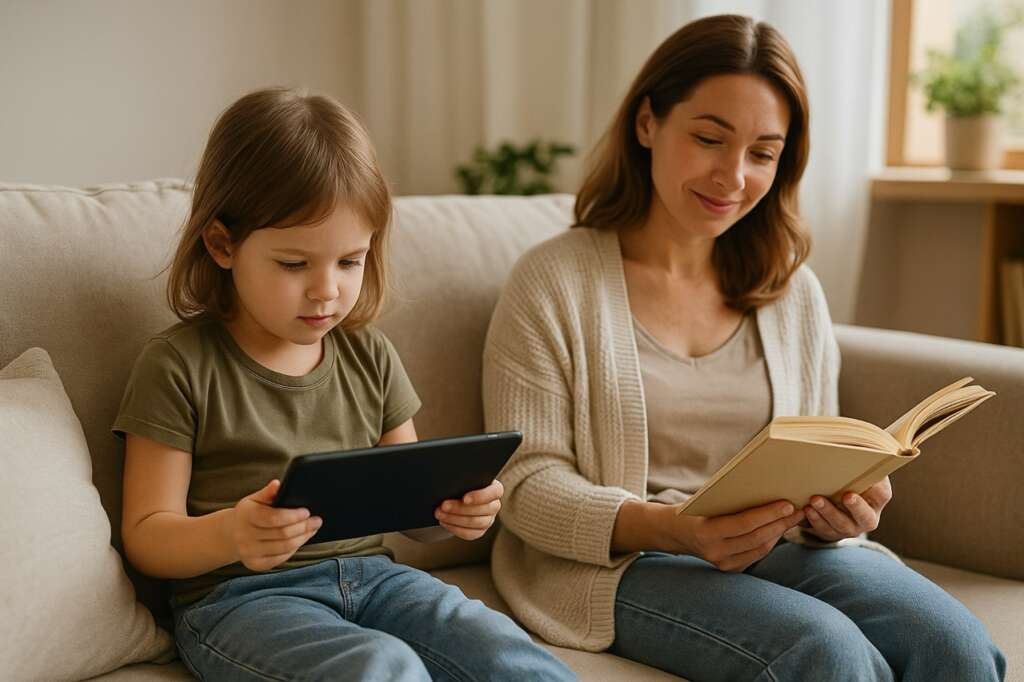How Much Screen Time Is Too Much? A Realistic Guide for Modern Parents
In a world full of tablets, smart TVs, and YouTube Kids, managing screen time can feel overwhelming. Here’s what’s normal, what’s not, and how to reset without the guilt.
Why Screen Time Feels So Complicated Now
Screen time isn’t just about TV anymore. It’s iPads, phones, video calls, interactive apps, and schoolwork. Parents are bombarded with conflicting advice, and guilt is everywhere. But here’s the truth — it’s not about the number of minutes. It’s about what kind of screen time, how it affects your child, and whether their overall wellbeing is balanced.
What the Experts Say About Screen Time in 2025
According to the WHO and the UK’s Royal College of Paediatrics, children over age 5 should ideally have no more than 1–2 hours of recreational screen time daily. But that guidance is flexible — especially for neurodivergent children, home-educated families, and households balancing multiple needs.
The real question isn’t “How many hours is too much?” It’s “Is screen use harming or helping my child’s development?”
How to Know if Screen Time Is Becoming a Problem
Watch out for these signs:
- Tantrums or meltdowns when screen time ends
- Lack of interest in toys, books, or outdoor play
- Increased sleep problems or nightmares
- Physical symptoms like dry eyes or headaches
- Social withdrawal or irritability
If these behaviours become consistent, it’s time to look at screen habits more closely.
What Counts as “Good” vs. “Passive” Screen Time
All screen time is not created equal. Here’s a quick breakdown:
| Type | Examples | Helpful? |
|---|---|---|
| Passive | TV, YouTube, TikTok | OK in moderation |
| Interactive | Educational apps, games with problem-solving | Yes — boosts skills |
| Creative | Drawing apps, coding games, video making | Yes — encourages imagination |
| Social | Video calls, virtual co-op games | Yes — supports connection |
Ask yourself: Is this screen use replacing something valuable (like sleep or movement)? If not, it’s likely not harmful.
How to Set Healthy Screen Time Limits Without a Fight
Setting boundaries doesn’t have to mean endless battles. Try these strategies:
- Create tech-free zones: Bedrooms, dinner tables, and the first hour after waking are great places to start.
- Use a visual timer: Apps like “Time Timer” or sand timers help kids understand limits better than sudden cut-offs.
- Balance screen time with movement: A good rule is 30 minutes of screen = 30 minutes of outdoor play, chores, or crafts.
- Make screen time a shared activity: Watch or play together. Ask questions. Show interest in their digital world.
- Model healthy habits: Let them see you unplug. Your actions speak louder than rules.
Printable Tracker: Reflect on Screen Time Habits Together
Want to help your child reflect without shame? Use our free weekly Screen Time Tracker to log screen use, rate how it made them feel, and spot patterns together.
So… How Much Screen Time Is Too Much?
If your child is moving their body, getting enough sleep, enjoying real-life connection, and engaging in creative play — their screen time is probably just fine. If not, you have a starting point. No need to panic. Just reset and rebalance.
Remember: screens aren’t the enemy. Guilt is. You’re doing your best — and that matters more than any number of minutes.
Mellow


